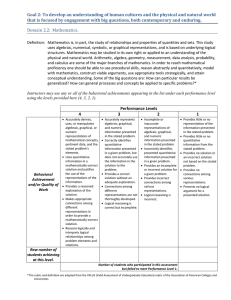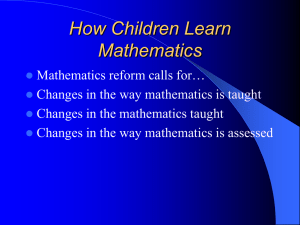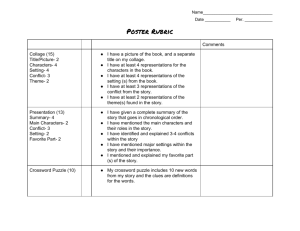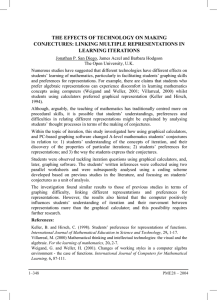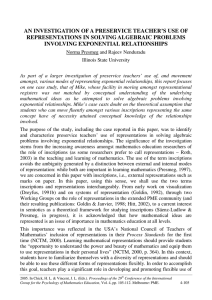HCPSS Curriculum Framework Grade 8 Unit 3
advertisement
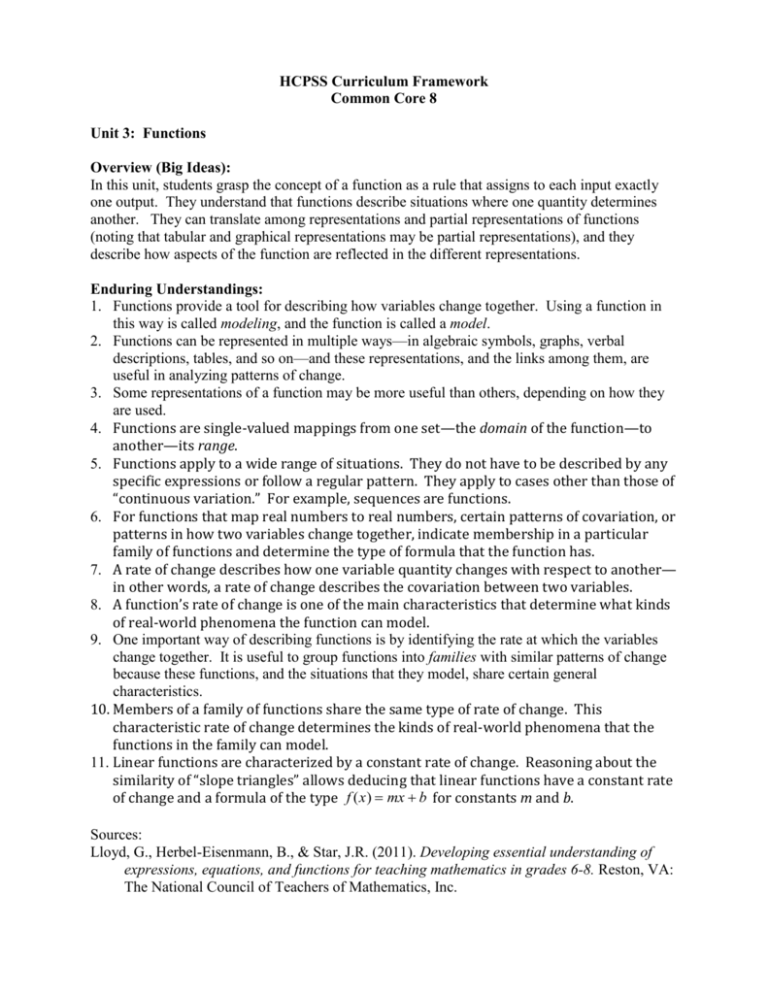
HCPSS Curriculum Framework Common Core 8 Unit 3: Functions Overview (Big Ideas): In this unit, students grasp the concept of a function as a rule that assigns to each input exactly one output. They understand that functions describe situations where one quantity determines another. They can translate among representations and partial representations of functions (noting that tabular and graphical representations may be partial representations), and they describe how aspects of the function are reflected in the different representations. Enduring Understandings: 1. Functions provide a tool for describing how variables change together. Using a function in this way is called modeling, and the function is called a model. 2. Functions can be represented in multiple ways—in algebraic symbols, graphs, verbal descriptions, tables, and so on—and these representations, and the links among them, are useful in analyzing patterns of change. 3. Some representations of a function may be more useful than others, depending on how they are used. 4. Functions are single-valued mappings from one set—the domain of the function—to another—its range. 5. Functions apply to a wide range of situations. They do not have to be described by any specific expressions or follow a regular pattern. They apply to cases other than those of “continuous variation.” For example, sequences are functions. 6. For functions that map real numbers to real numbers, certain patterns of covariation, or patterns in how two variables change together, indicate membership in a particular family of functions and determine the type of formula that the function has. 7. A rate of change describes how one variable quantity changes with respect to another— in other words, a rate of change describes the covariation between two variables. 8. A function’s rate of change is one of the main characteristics that determine what kinds of real-world phenomena the function can model. 9. One important way of describing functions is by identifying the rate at which the variables change together. It is useful to group functions into families with similar patterns of change because these functions, and the situations that they model, share certain general characteristics. 10. Members of a family of functions share the same type of rate of change. This characteristic rate of change determines the kinds of real-world phenomena that the functions in the family can model. 11. Linear functions are characterized by a constant rate of change. Reasoning about the similarity of “slope triangles” allows deducing that linear functions have a constant rate of change and a formula of the type f (x) mx b for constants m and b. Sources: Lloyd, G., Herbel-Eisenmann, B., & Star, J.R. (2011). Developing essential understanding of expressions, equations, and functions for teaching mathematics in grades 6-8. Reston, VA: The National Council of Teachers of Mathematics, Inc. Cooney, T. J., Beckmann, S., & Lloyd, G.M. (2010). Developing essential understanding of functions grades 9-12. Reston, VA: The National Council of Teachers of Mathematics, Inc. Essential Questions: o What is a function? Describe what it means for a situation to have a functional relationship. o What is the relationship between the input and output of a function? o In what ways can different types of functions be used and altered to model various situations that occur in life? o What units, scales and labels must be applied to accurately represent a linear function in the context of a problem situation? o Can students represent a function using real world contexts, algebraic equations, tables, and with words? o What are the advantages of representing the relationship between quantities symbolically? Numerically? Graphically? o Are students able to compare the properties of multiple functions, given a linear function, and determine which function has the greater rate of change? o Can students construct a function to model a linear relationship between two quantities, and determine the rate of change and initial values of the functions? Curriculum Standards: Define, evaluate, and compare functions. 1. Understand that a function is a rule that assigns to each input exactly one output. The graph of a function is the set of ordered pairs consisting of an input and the corresponding output. 2. Compare properties of two functions each represented in a different way (algebraically, graphically, numerically in tables, or by verbal descriptions). For example, given a linear function represented by a table of values and a linear function represented by an algebraic expression, determine which function has the greater rate of change. 3. Interpret the equation y mx b as defining a linear function, whose graph is a straight line; give examples of functions that are not linear. For example, the function A s 2 giving the area of a square as a function of its side length is not linear because its graph contains points (1, 1), (2, 4), and (3, 9), which are not on a straight line. Use functions to model relationships between quantities. 4. Construct a function to model a linear relationship between two quantities. Determine the rate of change and initial value of the function from a description of a relationship or from two (x, y) values, including reading these from a table or from a graph. Interpret the rate of change and initial value of a linear function in terms of the situation it models, and in terms of its graph or a table of values. 5. Describe qualitatively the functional relationship between two quantities by analyzing a graph (e.g., where the function is increasing or decreasing, linear or nonlinear). Sketch a graph that exhibits the qualitative features of a function that has been described verbally. Common Misconceptions: o Students may understand that domain and range refer to the set of all x-values or y-values for which the function is defined. Students may interchange the concepts of domain and range of a function. Additionally, students may have trouble remembering that for a given function each input (x-value) can have only one output (y-value). o Students may find it difficult to choose a scale that displays all of the data accurately. o Students often confuse the x and y axes when graphing. o It may be difficult for students to conceptualize that an equation, a table of values, and a graph can all represent the same problem situation. o The comparison of mathematical versus contextual solutions can be difficult.

